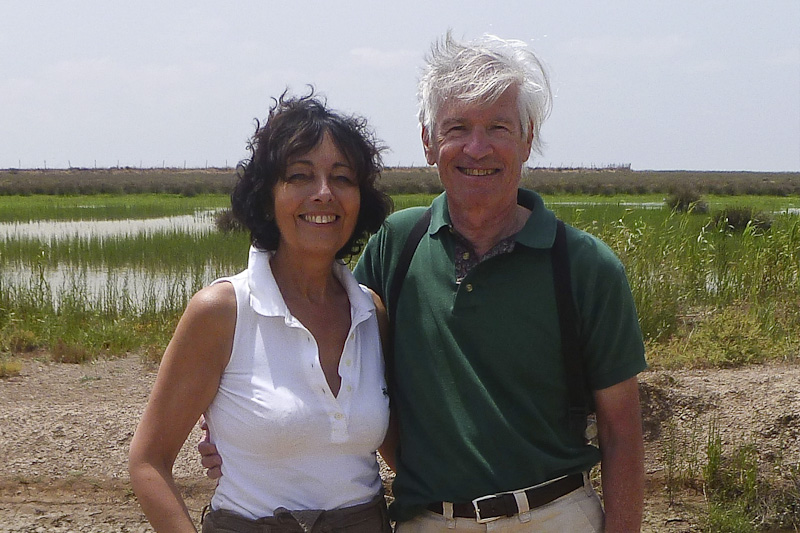
Jean-Michel Paulus, a hematologist, and Micheline Paulus-Jacquemin, an ophtalmologist, have graduated from the University of Liège, Belgium. Traveling in all five continents, they have selected bird photos representative of the 40 currently described bird orders, with the purpose of providing an illustrated overview of bird evolution. Alan Paulus, head of Global-USA.com implemen-ted the english and french versions of the site.
Heartfelt thanks are extended to Patrick Cardwell (Avian Leisure, ZA) for his expert guiding to the birds of South Africa and Namibia. We also thank Dr Danielle Hock, for her photos of Madagascar, the Antarctica and Ecuador/Galapagos, Alberto Garcia Rios for his photo of a Cuckoo Roller, Ben Rackstraw for his Sub-desert Mesite and Alastair Rae for his Sunbittern. Appropriate references are given in the texts on these species.
All photos have been taken in natural settings, with a half dozen exceptions duly indicated in the text. They include Emu (Farm at Murchison, New Zealand), Brown Kiwi (Courtesy of P. Jouk, Antwerp Zoo, Belgium), Southern Cassowary and Red-legged Seriema (Pairy Daiza Park, Brugelette, Belgium) and Tawny Frogmouth (Planckendael Park, Belgium).
Order and family classification A modern paper on bird evolution is by Hackett SJ et al (2008): Phylogenomic Study of Birds. Their phylogenomic classification of 171 species representing nearly all nonpasserine families, all major passerine clades and two crocodilian outgroups uses 19 aligned nuclear DNA sequences from 15 different chromosomes in the chicken genome. Using these and other data, the International Ornithology Committee (IOC) has edited an updated classification of World Bird Names by Gill F, Donsker D (eds), (2012): IOC World Bird List from which the related Boyd J (2012): Bird Taxonomy. was published. Within each of the 40 orders, the latter family classification was used in this site.
Supraorder classification A major difficulty in reconstructing the early bird tree, from which the 40 orders were derived, has been incomplete lineage sorting. This phenomenon resulted in differences in evolutionary history for different parts of the genome. This may have occurred during the rapid radiation provoked by the mass extinction dating about 66 million years. To address this problem, Jarvis ED et al (2014): Whole Genome Analyses of Birds determined the complete evolutionary record within each species genome rather than on aligned nuclear DNA sequences selected in different chromosomes. Their supraorder view is shown as arrows and yellow characters in the Bird Genealogy Panel.
Texts from the Wikipedia, the Encyclopædia Britannica (2012) have been much quoted in this site. Comments are continually added to photos, often borrowed from bird guides of Southern Africa (Sinclair I et al), East Africa (Stevenson T, Fanshawe J), Australia (Morcombe M), New Zealand (Robertson H et al), Europe (Mullarney K et al, Heinzel H et al), North America (Peterson RT; Sibley DA; Dunn JL, Alderfer J), West Indies (Raffaele H et al), Costa Rica (Stiles FG, Skutch AF; Garrigues R, Dean R), Ecuador (Ridgely RS and Greenfield PJ), Galapagos (Fitter J, Fitter D, Hosking D), Peru (Schulenberg TS et al), Chili (Jaramillo et al) and Borneo, Sumatra, Java and Bali (MacKinnon J, Phillipps K). Other comments are taken from "Bird, The Definitive Visual Guide (DK Publ, New Tork)".